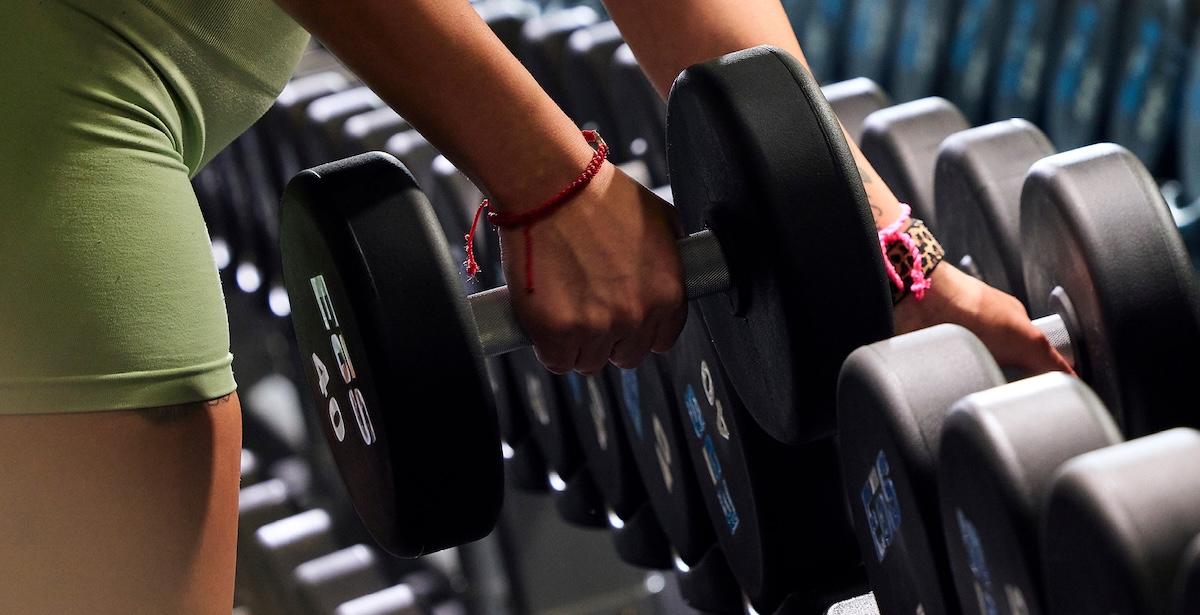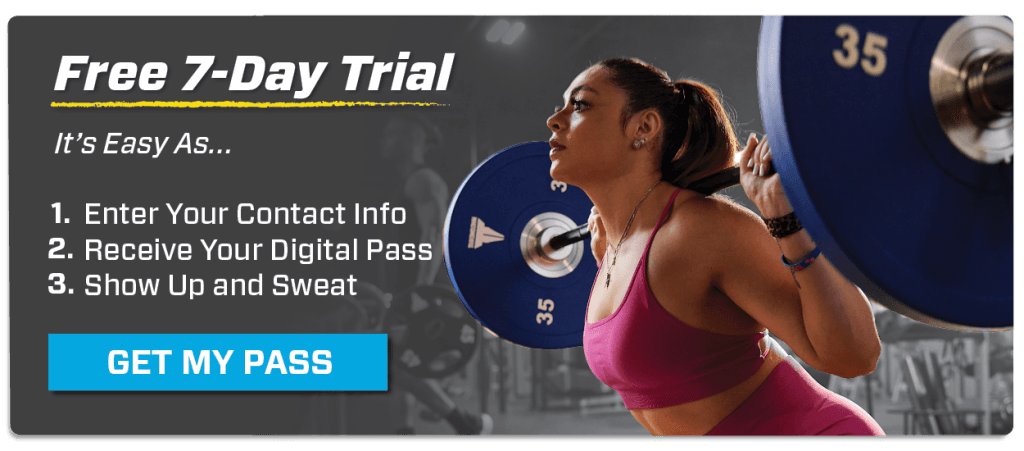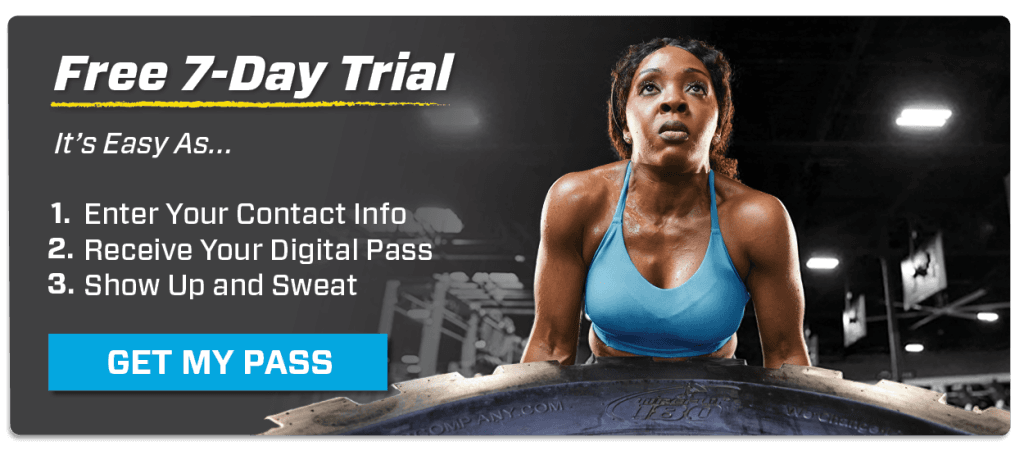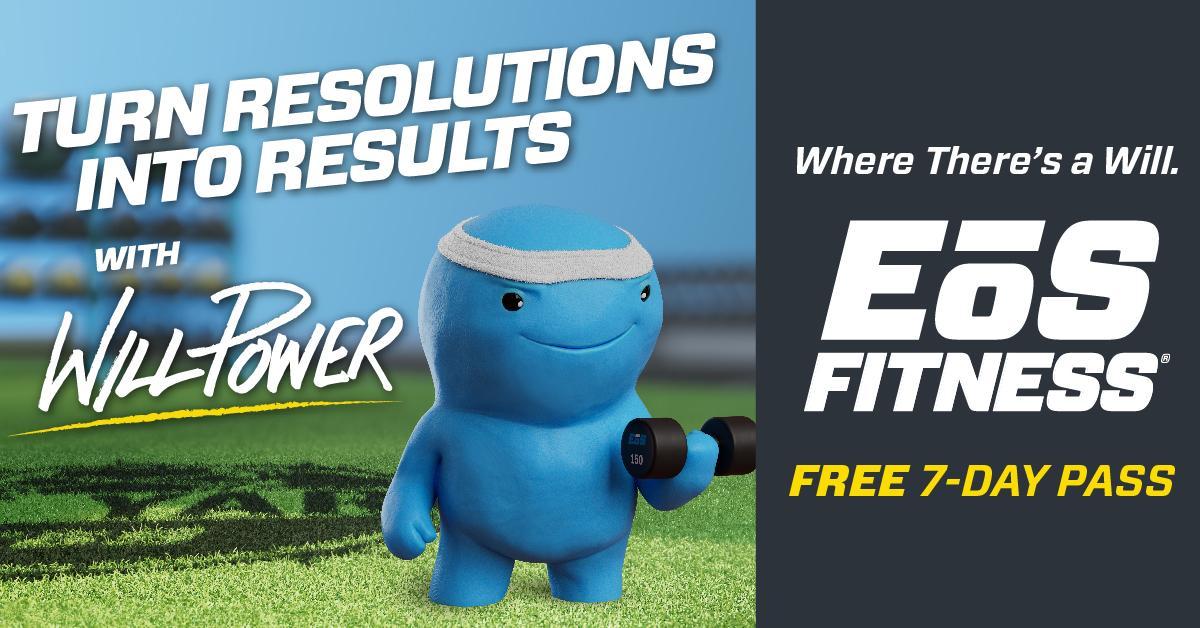HOW TO MAKE A SUCCESSFUL 7-DAY GYM WORKOUT PLAN: BEGINNER AND INTERMEDIATE EXERCISES
Fitness Tips
Nutrition
Jun 15, 2024 • 7min read
Looking to start a new exercise routine or hop back on the fitness train after a long break? It’s easy to feel overwhelmed the first time you walk into the gym. Should you hit the treadmill? Try a class? Grab a barbell? Take the guesswork out of exercising by sticking to a clear and easy-to-follow weekly gym routine. The right weekly gym workout plan will help you structure your exercise while also giving you plenty of room for flexibility and adaptation.
At EōS Fitness, we provide the guidance you need to create an effective gym workout schedule that fits your goals and lifestyle. Whether you’re looking for a workout plan for beginners or something more advanced, we’ve got you covered.
HOW TO CREATE A WEEKLY GYM ROUTINE
The beauty of a weekly gym workout plan is that it gives you a rough map to follow every time you visit the gym. Not only will you be able to spend your time in the gym more effectively, but you’ll also see better fitness results if you create a well-balanced plan. If you’re wondering how to make a workout plan, it starts with understanding your individual needs and goals.
What exactly does a weekly gym workout routine actually look like? That will depend on several factors, including:
- Your age, health and current fitness level
- Your specific fitness goals
- The amount of time you can devote to fitness each week (Because hey, life happens.)
Regardless of your circumstances or fitness goals, every weekly gym routine should contain some ratio of these primary components:
- Strength training
- Cardiovascular training
- Rest or active rest
To help you get started devising a gym exercise routine you can do weekly, here’s a good prototype for beginner and intermediate exercisers. Consider this an outline of what your weekly gym routine could look like. It will be up to you to fill in the blanks and build your routine within this adaptable structure.
Quick Note: Don’t get too hung up on the days of the week. Those are just placeholders. The order of programming is important, but you can start your weekly routine on any day of the week.
MONDAY: CARDIO AND UPPER BODY STRENGTH EXERCISES
Start your day at the gym with 30 minutes of cardio. Any type of cardio will work, including:
- Walking/jogging/running on the treadmill
- Using the elliptical trainer
- Swimming
- Using a stationary bike
Beginning exercisers may want to start with 15 or 20 minutes of cardio or perform two 10-minute sessions of moderate cardio with five minutes of rest or walking between them.
Next, move on to strength training. Take 30 to 40 minutes to work on the muscles of your upper body, including:
- Deltoids (shoulders)
- Pecs (chest)
- Traps (neck and upper back)
- Biceps
- Triceps
Pro Tip: Your body is a fine-tuned machine that will quickly adapt to the stress you put on it. Just because you hit the same muscle groups each week doesn’t mean you have to do the same exercises or follow the same set and rep schemes. Try using different movements. For example, one week, you can focus on using resistance machines. The next week, use dumbbells and barbells. The next week, try some bodyweight exercises.
TUESDAY: CARDIO AND LOWER-BODY STRENGTH EXERCISES
It’s time for another 30-minute round of cardio. Challenge yourself by doing something different. Did you use the elliptical on Monday? How about the treadmill today or even a 30-minute cycling class?
For the strength-training portion of your workout, focus on the big muscles of your lower body, including your:
- Glutes
- Quads (front of thigh)
- Hamstrings (back of thigh)
- Calves
- Adductors (inner thigh)
- Abductors (outer thigh)
As you get more comfortable with your gym exercises and workout schedule, consider trying more complex movements, like squats and deadlifts. These compound movements will strengthen your entire posterior chain and help improve your mobility and balance. Just make sure you dial in good form with lower weights first.
Pro Tip: Consider keeping your cardio fresh by changing up the intensity of your workouts. Most cardio machines allow you to set timed programs that will change the intensity throughout the workout for you.
WEDNESDAY: HIIT TRAINING AND CORE STRENGTH EXERCISES
Now it’s time to notch up your cardio workout with 10 to 20 minutes of HIIT training. High-Intensity Interval Training, or HIIT, is a form of workout that focuses on bursts of high-intensity exercise followed by short rests.
The HIIT exercise format can be applied to many different movements, but focus on cardio movements for this training, like:
- Jumping jacks
- Mountain climbers
- Sprints
- Box step-ups
- Side shuffle
You also have a lot of flexibility in programming HIIT workouts. One of the most popular formats is performing a designated movement at a high intensity for 20 seconds, then resting for 10 seconds.
For beginning exercisers, we recommend 20 seconds on, 20 seconds off. Your goal is to push yourself during the 20 seconds on. String together five or six different exercises and repeat for three or four rounds to get a great HIIT workout.
Then, it’s time to get those abs of steel. On core day, spend 20 minutes working your:
- Abdominals
- Obliques (the muscles on each side of your abs)
- Lower back
Pro Tip: Instead of just hanging around between sets of the same movement, perform “supersets.” This means doing a different strength movement (preferably activating a new muscle group) between sets of your original movement. Supersets can cut your time at the gym and keep you moving through all your sets.
THURSDAY: REST DAY OR ACTIVE REST DAY
Huzzah! You’ve been working out hard during the first part of the week, and now it’s time to let your body rest. No, you aren’t being lazy by skipping the gym today. Rest is one of the most important parts of your fitness routines. Rest days allow your body to repair itself after all the training you’ve done. In fact, your gains come from your rest days!
Intermediate exercisers should consider taking an active rest day, which means performing an easy and low-impact workout. Active rest could mean a nice, easy swim in the pool, taking a yoga class or just taking a walk around the neighborhood.
Pro Tip: If you missed a day at the gym between Monday and Wednesday, make it up today. Also, use your rest day to focus on your nutrition and getting a full eight hours of sleep.
FRIDAY: FULL BODY STRENGTH TRAINING
It’s all about the gainz today. (Though strength training doesn’t mean you’ll automatically bulk up. That’s a major myth of weightlifting.)
Give yourself an hour or more at the gym to hit all your major muscle groups with a comprehensive full body workout. Try performing exercises you haven’t already done this week to challenge your muscles in new ways. If you’re wondering what amount of sets and reps you should use, that will depend on your experience and fitness goals.
New exercisers or exercisers who are more focused on cardio should perform a higher amount of reps at more moderate weights. Intermediate exercisers and those who want to achieve more defined muscles should perform fewer reps at heavier weights.
Pro Tip: Not sure how to put together a full-body strength workout? Take a strength fitness class for expert guidance.
SATURDAY: ENDURANCE CARDIO TRAINING
Incorporating endurance cardio into your daily workout routine helps build stamina and improves cardiovascular health, so it’s time to give your heart and lungs a great workout with some steady-state cardio. Aim to perform some form of cardio for around 60 minutes. If you’re brand new to exercising, that could mean going for an extra-long walk. Other exercisers may want to hit the trails for a long run or jog. You may want to sign up for an hour-long dance fitness class. Try to keep your pace moderate but also challenging. Walk or rest when needed but try to rest less over time.
Pro Tip: You should always have water with you at the gym, but it’s doubly important when you plan on a long cardio workout. It’s also a good idea to take some electrolytes before or during an extended cardio workout.
SUNDAY: REST DAY OR ACTIVE REST DAY
Finish off your weekly gym routine with a well-deserved rest. New exercisers can take the entire day off, but consider using Sunday as an active rest day after a few weeks.
This is the perfect time to take a yoga class, perform some gentle stretching at home, or use a foam roller to work out all knots and tight muscles. Consider Sunday your chance to reset your body for a brand new week of fitness on Monday.
Pro Tip: Sunday is also an excellent day to review your nutrition goals for the next week. Many fitness enthusiasts actually like to prep their meals for the following week. Having your meals set makes it so much easier to stick with your eating goals.
START YOUR 7-DAY WEEKLY GYM WORKOUT PLAN WITH EōS FITNESS
We hope our outline will give you a good starting point as you begin to design your own weekly gym routine. Make sure to adapt the recommendations to a system that works for you.
If you aren’t sure how to fill in all the blanks and create workouts for yourself, you can always take group fitness classes at the gym. Another option is to hire a personal trainer, at least for a few months. A personal trainer will design a fitness plan for you and help you understand how to structure a workout. You’ll get lots of individual exercise ideas and learn how to reach your next fitness level.







